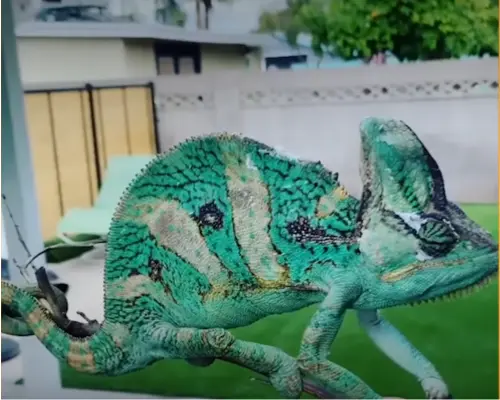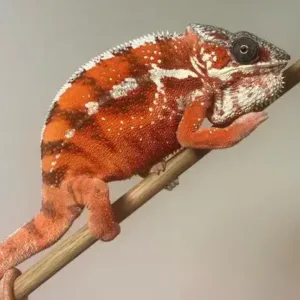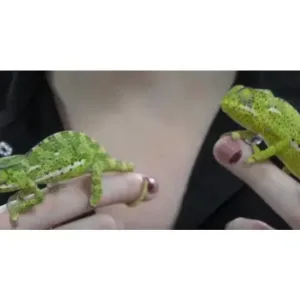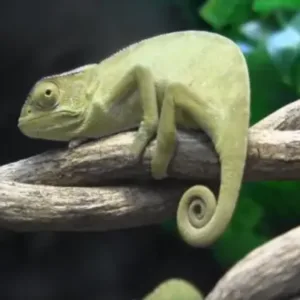The tall chameleon with the helmet-like structures on the tops of their heads are called veiled chameleons. The water that falls onto the heads of both males and females is steered by the casque, which is present in both males and females. The bodies of veiled chameleons are banded in shades of green, yellow, and brown so that they adjust to different shades.
Males can reach 18 to 22 inches in total length, with a snout to vent length of 12 to 18 inches, while females can reach 10 to 13 inches, with a snout to vent length of just 4 to 6 inches.
Veiled Chameleon Behavior
In order to be territorial and aggressive to other chameleons, veiled chameleons should always be housed individually. They tend to be rather calm towards people, but regular handling can make them stressed out. Pets are better suited to being watched and not handled. These chameleons aren’t good pets for small children or inexperienced reptile owners.
veiled chameleon feeding
Veiled chameleons are primarily insectivores, so they should be fed a variety of insects every other day. Crickets are usually the backbone of their diet, but they may also eat crickets, cockroaches, butterworms (good for calcium), silkworms, flies, and grasshoppers, as well as mealworms, superworms, and waxworms.
You can offer a small number of vegetables and fruits such as dandelion leaves, collard greens, kale, diced zucchini, red pepper, blueberries, and thin slices of apple or pear. As needed, monitor your chameleon’s feeding and adjust amount. You might want to reduce the It is advisable to dust insects with a calcium/vitamin D3 supplement at least two to three times a week. It is possible to add a multi-vitamin and mineral supplement once per week. If you want to use a supplement that doesn’t contain a lot of vitamins, you can use a supplement that doesn’t contain a lot of vitamins.















